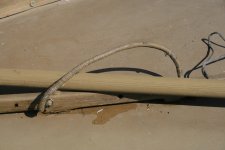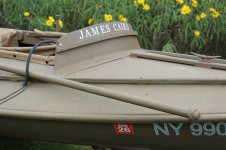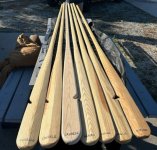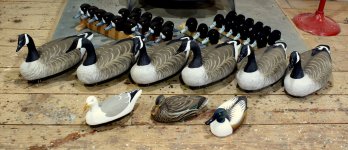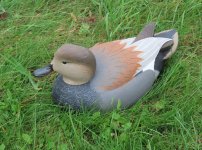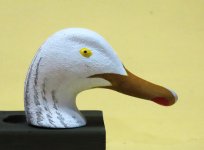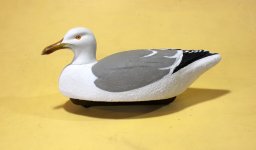Let's start a day early.
Years ago I made two hooks for picking up decoys. Nothing fancy, just some local hardware store hooks screwed to a closet rod. A few years ago I loaned my rig to a hunting partner and they lost a hook. No problem, I still have a backup. I loaned the same person my rig again and damned if they didn't do it again! Now I don't have a hook for picking up decoys.
While looking on ebay, of all places, I ran across a boat hook that intrigued me (picture below). It had a nice shape and the blunt end of the hook certainly would be wader safe. I decided I needed to copy it.

The challenging part would be coming up with a means to bend a 1/4" steel rod into shape. I opted to build a jig from drops I gathered at a local steel supplier, an old wrench, and a large nut and bolt I picked up at my local Fastenal. I made two benders, one for the hairpin bend, and one for the half-circle. The first picture shows how I drilled the bolt for the bending pins, and the next two show the completed bending jigs. The last picture shows a completed hook along with how I attached it to the pine dowel. That is decoy coord wrapped tight and coated in epoxy. Not visible is a right-angle bend at the base of the hook that inserts into a 1/4" hole drilled in the pole. The cord ends are tucked underneath the wrap so no loose ends or unravelling will ever happen. This hook is never coming away from the pole. The next time I have some duckboat paint out the hooks, seven in total, will get a good coating. The link below is to a video of the build I posted on Instagram.
Vintage boat hook for decoys
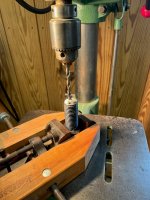
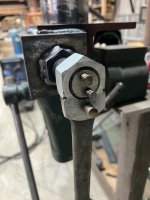
The pins are cut off drill bit shanks which are harder than the mild steel the jig will bend.
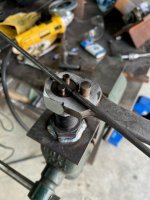
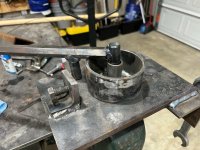

Years ago I made two hooks for picking up decoys. Nothing fancy, just some local hardware store hooks screwed to a closet rod. A few years ago I loaned my rig to a hunting partner and they lost a hook. No problem, I still have a backup. I loaned the same person my rig again and damned if they didn't do it again! Now I don't have a hook for picking up decoys.
While looking on ebay, of all places, I ran across a boat hook that intrigued me (picture below). It had a nice shape and the blunt end of the hook certainly would be wader safe. I decided I needed to copy it.

The challenging part would be coming up with a means to bend a 1/4" steel rod into shape. I opted to build a jig from drops I gathered at a local steel supplier, an old wrench, and a large nut and bolt I picked up at my local Fastenal. I made two benders, one for the hairpin bend, and one for the half-circle. The first picture shows how I drilled the bolt for the bending pins, and the next two show the completed bending jigs. The last picture shows a completed hook along with how I attached it to the pine dowel. That is decoy coord wrapped tight and coated in epoxy. Not visible is a right-angle bend at the base of the hook that inserts into a 1/4" hole drilled in the pole. The cord ends are tucked underneath the wrap so no loose ends or unravelling will ever happen. This hook is never coming away from the pole. The next time I have some duckboat paint out the hooks, seven in total, will get a good coating. The link below is to a video of the build I posted on Instagram.
Vintage boat hook for decoys


The pins are cut off drill bit shanks which are harder than the mild steel the jig will bend.



Last edited:



